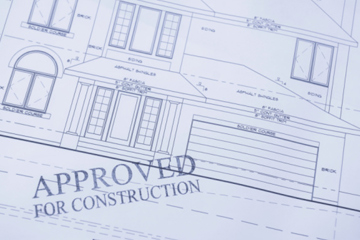
1) The best advice in maintaining a termite free home or reducing the risk of costly damage termites can cause is to maintain regular inspections. If the property is at moderate-high risk of termite attack or for example If the property is in a rural setting surrounded by eucalypts every 6 months an inspection is recommended. It is important to note termites can cause damage quickly and often remain in places undetected until damage become evident. For other homes and with termite protection installed every 12 months.
2) If high moisture, drainage or leaks have been noted it is important to engage a licensed plumber to rectify as soon as possible. When you move in, Maintain annual termite inspections as they will also help identify leaks. High moisture is a major factor in attracting termites.
3) Outside timber elements. Its important to ensure that any timber around the property or on the structure is not in direct ground contact or if it is it is treated and is not showing signs of rot or decay. Have a tradesperson repair or maintain any decay.
4) Slab Homes. Most modern buildings have a physical termite management system installed to prevent termites entering the building undetected. It is important to make sure the slab edge is visible at all times and or weep holes are exposed and no stored goods are laying around the side of the building, or gardens placed against the side of the structure.
5) During Rain, Make sure that the site drains adequately and no leaks are present. If so have a plumber assess.
6) If your property is in close proximity to gum trees you should have them test drilled for and inspected for termite activity. Termites do and commonly nest in the root crown or hollow out the trunk. This should be part of any property maintenance.
7) Ventilation. Termites love mouldy damp and humid environments. If the building has a subfloor ensure if is well ventilated. Companies can provide ventilation works including installation of solar fans.
8) Gardens against walls. Its good practice to ensure garden beds, plants and wood chips are kept off garden walls. Termites love untreated timber wood chips and constant supply of water.
9) It is not uncommon for houses especially older to have had some sort of termite history. CSIRO states 1 in 4. It is important to ensure if previous termite infestation, damage or treatments were identified that a record of repair from a builder is obtained and also a certificate of termite treatment. If this cannot be identified as they may have been lost or out of date a further detailed assessment of the internal walls is recommended as this is only a visual inspection of the accessible areas at time of inspection. This requires permission from the vendor in writing. If protection has expired it is recommended that homeowners especially identified areas of moderate-high risk areas have some type of management system in place with annual or frequent inspections carried out.
10) Hard Woods and Treated Pine. Termites can cause damage to hardwood timber. It is a fact that termites natural food source is hardwood. Treated pine in most situations will be envelope treated only and there will be other untreated elements in the house. Ensure annual inspections are carried out.
12) Extensions and renovations. Some purchasers have plans to extend or renovate. Make sure before you carry out any renovations or extensions the adequate termite protection is installed by a licensed pest control company to prevent headaches down the track. Also ensure if an existing attachment or renovation has termite protection in place.
13) Enjoy your new property. Yes termites are a risk to any property in most parts of Australia, however it will be helpful to attend to any of our recommendations before you buy and keep up the annual checks.


